Are you tired of your tonneau cover looking worn-out and dull? Want to know how to restore its pristine appearance?
Whether your cover is made of vinyl, leather, or fabric, this blog post will provide you with effective tips and tricks to make it look brand new.
From cleaning techniques to protective measures, we’ve got you covered.
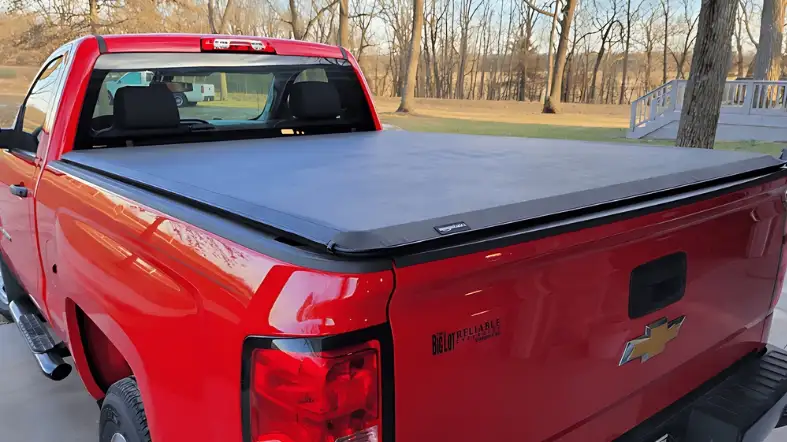
Step By Step Guide To Make A Tonneau Cover Look New
1. Assessing the Condition of Your Tonneau Cover
Checking everything on the tonneau cover is the first step.
Inspect for Physical Damage
- Look for any tears, punctures, or cracks in the cover material.
- Check the stitching and seams for any signs of unraveling or fraying.
- Note any loose or broken fasteners, such as snaps or Velcro.
Evaluate Fading and Discoloration
- Examine the color of the tonneau cover to identify any fading or discoloration.
- Observe if the original shade has become dull, uneven, or changed in certain areas.
- Take note of any sun damage or exposure-related issues, such as bleaching or oxidation.
Assess Surface Contamination
- Inspect the cover for dirt, dust, debris, and other surface contaminants.
- Determine if there are any stubborn stains, such as grease, oil, or bird droppings.
- Pay attention to any mold or mildew growth, especially in humid environments.
Consider Water Repellency:
- Evaluate the cover’s water repellency by observing how water beads and rolls off.
- Note if the surface has become water-absorbent or prone to leaks and moisture buildup.
- Assess if the cover’s protective coating has worn off over time.
Check Functionality
- Test the opening and closing mechanisms of the tonneau cover.
- Ensure that the latches, hinges, and other hardware are working properly.
- Verify if the cover maintains a tight seal and protects the truck bed effectively.
2. Gathering the Necessary Tools and Supplies
Tools are vital parts of cleaning your tonneau cover.
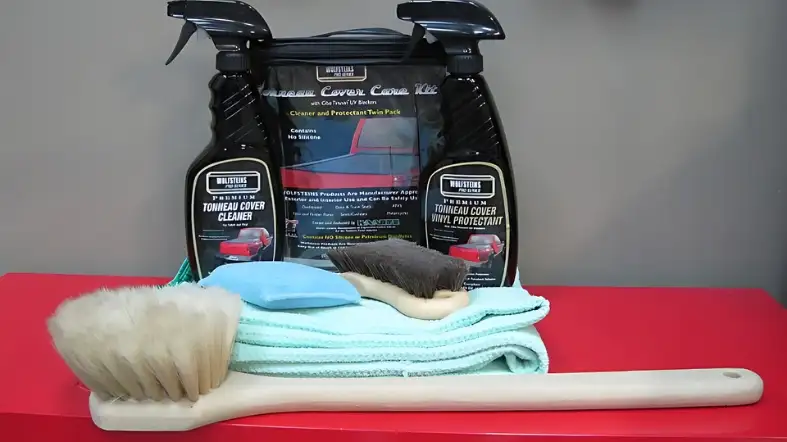
Soft-Bristled Brush
To avoid scratching or damaging the tonneau cover, it is crucial to use a soft-bristled brush.
This type of brush will effectively remove dirt and grime without compromising the cover’s integrity.
Mild Soap or Cleaner
Choose a gentle, non-abrasive soap or cleaner specifically formulated for automotive use.
Avoid harsh chemicals, as they can fade or deteriorate the tonneau cover material over time.
Microfiber Cloths
Microfiber cloths are highly absorbent and gentle on the tonneau cover’s surface.
They are ideal for both cleaning and drying, as they minimize the risk of scratching or leaving lint behind.
Soft Sponge or Wash Mitt
Using a soft sponge or wash mitt can help distribute the soap or cleaner evenly across the tonneau cover.
This ensures thorough cleaning while minimizing the risk of damaging the cover.
Water Source
A reliable water source, such as a hose or pressure washer, is essential for rinsing off the tonneau cover after cleaning.
Ensure an adequate supply of water to remove all traces of soap and dirt effectively.
3. Cleaning Techniques for Tonneau Covers
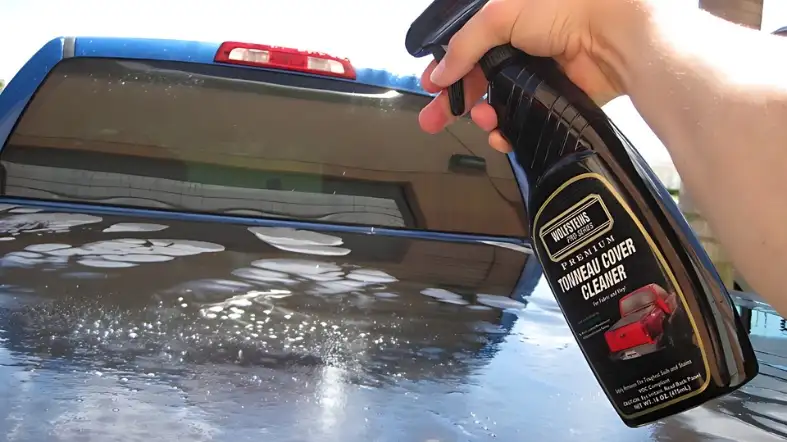
Pre-Rinsing
Before applying any soap or cleaner, give your tonneau cover a thorough pre-rinse.
This step helps remove loose debris, making the subsequent cleaning process more effective.
Diluting the Soap
Follow the manufacturer’s instructions to dilute the soap or cleaner with water in a bucket. This ensures the proper concentration for safe and effective cleaning.
Soaping and Scrubbing
Using the soft-bristled brush and the soapy water mixture, gently scrub the tonneau cover in a back-and-forth motion.
Focus on areas with visible dirt or stains while ensuring even coverage across the entire surface.
Rinse
After thoroughly scrubbing the tonneau cover, rinse it with clean water using a hose or pressure washer.
Make sure to remove all traces of soap and dirt, paying particular attention to crevices and corners.
4. Removing Stains and Tough Dirt: Be careful and gentle while rubbing
Stubborn Stains
A specialized cleaner or stain remover may be necessary for stubborn stains, such as bird droppings or tree sap.
Apply the cleaner directly to the stain, following the product’s instructions, and gently scrub with a soft brush or sponge. Rinse thoroughly afterward.
Mold or Mildew
If you notice mold or mildew on your tonneau cover, a mixture of vinegar and water can effectively remove it.
Apply the solution to the affected areas and let it sit for a few minutes. Then, scrub gently and rinse thoroughly.
Rust or Oxidation
To address rust or oxidation on metal components of your tonneau cover, use a rust remover or metal polish.
Apply the product according to the manufacturer’s instructions, and carefully scrub the affected areas with a soft brush. Rinse well to remove any residue.
5. Drying and Conditioning Methods
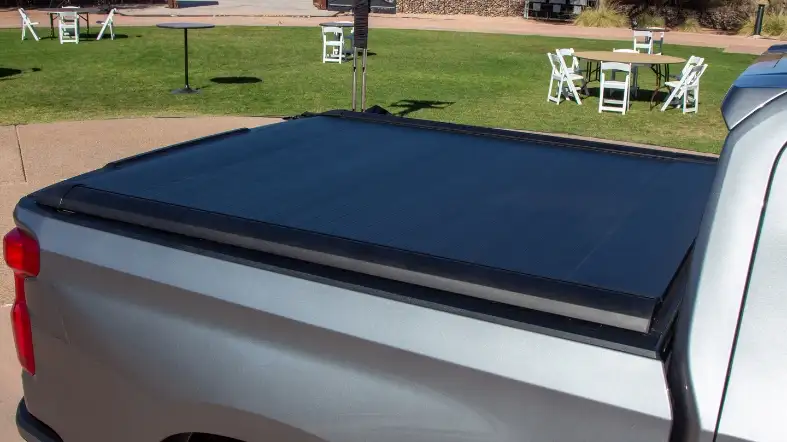
Thoroughly Clean the Cover
Cleaning the tonneau cover thoroughly is crucial before beginning the drying and conditioning process.
Use a mild detergent or specialized cleaner designed explicitly for tonneau covers.
Gently scrub the cover with a soft-bristled brush, paying attention to any heavily soiled areas. Rinse off the cleaner with water and allow the cover to dry completely.
Remove Excess Moisture
To ensure optimal drying, remove any excess moisture from the tonneau cover. Use a clean microfiber cloth or sponge to absorb the water from the surface.
Press the cloth firmly against the cover, focusing on areas where water accumulates, such as folds or seams.
Repeat this process until the cover feels relatively dry to the touch.
Apply a UV Protectant
UV rays from the sun can cause damage to tonneau covers, leading to fading and deterioration.
To prevent this, apply a high-quality UV protectant specifically formulated for tonneau covers.
Ensure the cover is completely dry before application. Spray the protectant evenly across the surface, covering every area.
Let it sit for a few minutes to allow proper absorption before moving on to the next step.
6. Repairing Minor Damage on Tonneau Covers
Assessing the Damage
When confronted with minor damage, such as small tears, punctures, or loose stitching, it is crucial to begin by assessing the extent of the problem.
Inspect the cover thoroughly, focusing on vulnerable areas like seams and fastening mechanisms.
Repairing Tears and Punctures
To repair tears and punctures, clean the affected area with mild detergent and water.
Once dry, apply an adhesive specially designed for tonneau covers using a small brush or applicator.
Carefully align the torn edges and apply pressure to bond them together. Allow sufficient drying time before subjecting the repaired area to stress.
Reinforcing Loose Stitching
Loose stitching can compromise the tonneau cover’s strength and integrity.
Carefully sew over the loose stitches, reinforcing the affected area using a sturdy thread made for outdoor use.
This will help prevent further unraveling and ensure the longevity of your cover.
Replacing Damaged Hardware
If you encounter damaged or broken hardware components, such as snaps or clamps, it is advisable to replace them promptly.
Contact the manufacturer or a reputable automotive parts supplier for the correct replacement parts.
Follow the manufacturer’s instructions to ensure proper installation and functionality.
7. Restoring Faded Tonneau Covers
Cleaning the Tonneau Cover
Before restoration, thoroughly clean the tonneau cover to remove dirt, grime, and any other contaminants.
Use a mild detergent, warm water, and a soft-bristle brush to scrub the surface gently.
Rinse with clean water and let the cover dry completely before moving on to the next step.
Applying a Vinyl Protectant
Consider using a quality vinyl protectant to restore the color and enhance the appearance of a faded tonneau cover.
Choose a product specifically formulated for automotive applications, ensuring it contains UV protection.
Apply the protectant evenly using a clean cloth, following the manufacturer’s instructions. This will help prevent further fading caused by sun exposure.
Restoring Discoloration or Stains
Additional steps may be required if your tonneau cover has significant discoloration or stubborn stains.
Research suitable vinyl cleaners or stain removers and select one that matches your cover’s material.
Test the product on a small, inconspicuous area first to ensure it does not cause further damage.
Apply the cleaner as directed, gently scrubbing the affected areas with a soft brush. Rinse thoroughly and allow the cover to dry completely.
Finalizing the Restoration
Once the tonneau cover is clean and restored, consider applying a protective wax specifically designed for vinyl surfaces.
This will provide an additional layer of defense against environmental elements and help maintain the cover’s appearance for an extended period.
Tips for Regular Maintenance of Tonneau Covers
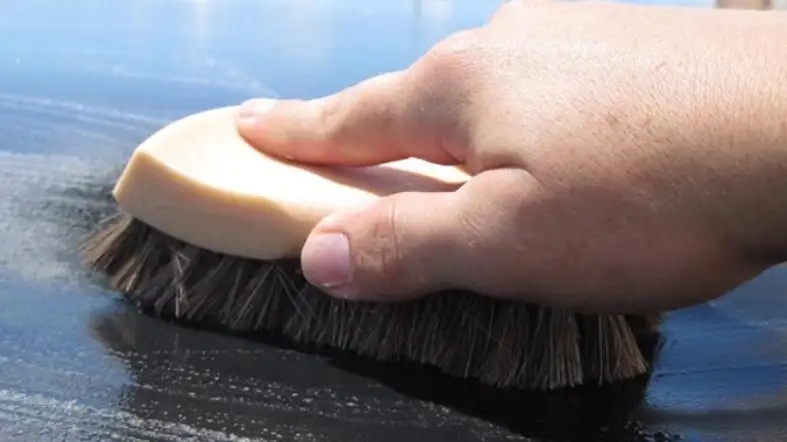
Cleaning and Washing
Proper cleaning is the first step toward maintaining your tonneau cover. Begin by removing any loose debris or dirt using a soft-bristle brush or a microfiber cloth.
This will prevent scratching the surface during the cleaning process. Then, mix a small amount of warm water in a bucket using a mild soap or a dedicated tonneau cover cleaner.
Dip a sponge or a soft cloth into the soapy water and gently scrub the tonneau cover, paying close attention to any stubborn stains or grime.
Rinse the cover thoroughly with clean water, removing all the soap residue. Once you’ve completed cleaning, use a clean microfiber cloth to dry the tonneau cover, removing any excess moisture.
Protecting Against UV Rays
The harsh rays of the sun can cause damage to your tonneau cover over time, leading to fading and deterioration.
To protect it against UV rays, consider applying a UV protectant designed explicitly for tonneau covers.
These protectants act as a barrier, shielding the cover from the sun’s harmful effects and preventing color fading and cracking.
Before applying the UV protectant, ensure the tonneau cover is clean and dry.
Spray a small amount of the protectant onto a clean, dry cloth and then evenly distribute it across the surface of the cover.
Make sure to cover all areas, including the sides and corners. Allow the protectant to dry completely before exposing the cover to any moisture or dust.
Lubrication and Maintenance of Hardware
Properly functioning your tonneau cover’s hardware is crucial for smooth operation.
Over time, dirt, dust, and debris can accumulate in the tracks, hinges, or locking mechanisms, hindering their performance.
To prevent this, it’s essential to lubricate these components regularly.
Using a silicone-based lubricant or a dedicated tonneau cover lubricant, apply a small amount to the moving parts of the cover.
This includes hinges, locks, rails, and latches. Be careful not to apply excessive lubricant, as it can attract dirt and debris. Wipe away any excess lubricant with a clean cloth.
Inspecting and Repairing Damage
Regularly inspecting your tonneau cover is crucial to identify any signs of damage or wear. Regularly check for tears, loose stitching, or worn-out parts.
If you spot any damage, it’s important to address it promptly to prevent further deterioration.
For minor repairs such as small tears or loose stitching, consider using a vinyl repair kit specifically designed for tonneau covers.
These kits typically include adhesive patches or liquid vinyl that can be applied to the damaged area.
Follow the instructions in the repair kit carefully to ensure a proper and long-lasting repair.
For more significant damage or issues with the hardware, it’s advisable to consult the manufacturer’s guidelines or contact a professional for assistance.
They can provide expert advice or carry out the necessary repairs to restore the tonneau cover to its optimal condition.
FAQs
What Can I Do To Remove Stains From My Tonneau Cover?
For minor stains, try using a mixture of water and mild soap with a soft brush or sponge.
You can use specialized vinyl cleaners or a diluted solution of vinegar and water for tougher stains.
How Often Should I Clean My Tonneau Cover?
It is recommended to clean your tonneau cover at least once every three months, or more frequently if it’s exposed to harsh conditions or heavy dirt and debris.
Can I Use Wax On My Tonneau Cover?
Yes, you can use a non-abrasive wax designed for vinyl surfaces to protect and restore the appearance of your tonneau cover.
Follow the manufacturer’s instructions for best results.
My Tonneau Cover Has Lost Its Flexibility. How Can I Restore It?
To restore flexibility, you can use a vinyl protectant or conditioner.
Apply it according to the product instructions and allow it to penetrate the material, which should help restore its flexibility.
Are There Any Specific Precautions I Should Take When Cleaning My Tonneau Cover?
Avoid using abrasive brushes or scrubbers that can damage the surface of the cover.
Additionally, always rinse off any cleaning agents thoroughly to prevent residue buildup that could affect the appearance and longevity of the cover.
Final Words
To make your tonneau cover look new, you can easily restore its shine and vibrancy with regular cleaning and maintenance.
Gently wash it with mild soap and water, avoiding harsh chemicals, and apply a vinyl protectant to rejuvenate its appearance.
By taking these simple steps, you can keep your tonneau cover looking fresh and protect it from stains, scratches, and the effects of time.
Show your tonneau cover some love, and it will reward you with a sleek and polished look that lasts.
